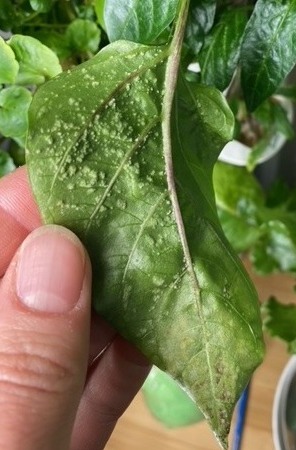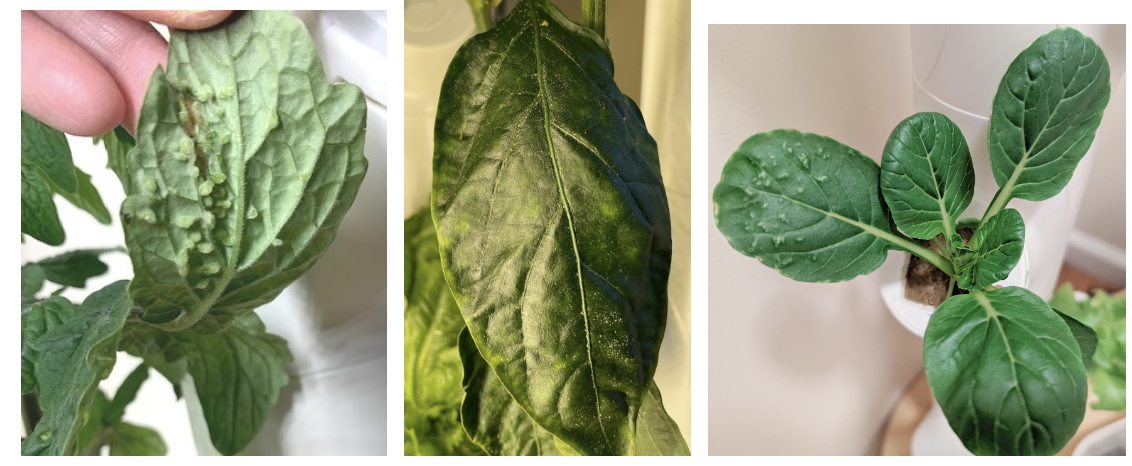Identifying and Understanding Edema
What is edema?
Noticing some leaves curling up, or bumps on some of your plants' leaves? One explanation might be that your plants have edema. Rest assured, edema isn't a fungus or even a disease. In fact, in most cases edema isn't harmful to your plants at all, and affected plants will continue to grow successfully.
Edema on a Pepper leaf
Edema is a physiological condition in plants that frequently appears in hydroponic settings. Edema occurs when a plant absorbs more water than it can transpire, or release, leading to a build-up of fluid in the plant tissues.
What does edema look like?
Edema appears as small, translucent, fluid-filled blisters that typically form on the undersides of older leaves. Edema can also show up on stems, the top of leaves, and occasionally on flowers and fruit.
The blisters can range in size, with smaller ones resembling a crystalized crust, while larger ones can appear more bulbous.
Edema on a Tomato, Pepper, and Tatsoi leaf
The blisters tend to be lighter in color than the surrounding leaf tissue, and may increase in size or merge, burst, and then scar, turning tan in color and corky in texture. Some or all affected leaves may eventually shrivel or roll up before falling off.
Seeing something on your plants that doesn't match this description? Read more here about identifying potential pests!
Why does edema happen?
Edema occurs when there is an imbalance between a plant’s water uptake and water loss, taking in more water than they can use, or transpire. The crystal-like bumps we observe on the plant are a result of plant cells swelling and bursting in response to the excess water.
Several different environmental conditions which prevent effective water loss can trigger edema. These include high relative humidity, low light intensity, cool air temperatures, and poor ventilation or airflow.
How can I reduce edema?
Even though most plants will continue growing successfully despite having edema, we recommend removing any leaves showing severe damage. Only extreme cases of edema, when severe blistering and scarring cause extensive damage to the leaf tissues, limit plants' ability to photosynthesize, or make food.
You can keep leaves with mild cases, as these often continue to grow without affecting the rest of the plant's development.
Tips to help reduce edema's frequency:
Check your growing environment's conditions. Air that is cool (below 65°F) and humid (above 60%) can contribute to the condition.
Ensure plants exhibiting signs of edema are receiving adequate light and are not shaded by other plants. Follow our yCube Placement Guide to find every plant's ideal spot.
Increase airflow by separating your largest plants. Frequent harvesting also helps!
Remember, in most cases edema will not impact your plants' overall development. If you follow these tips and are still not seeing a decrease in your plants' edema but want to continue treating it, consider adding a small fan on low to increase airflow around your Gardyn.
You may also try reducing the frequency of your daily waterings. If you choose this approach, however, be cautious and monitor your Gardyn closely, as other plants may need more frequent watering.
With these tips, we hope you'll feel confident identifying and treating edema on your Gardyn.
Questions? Reach us at support@mygardyn.com, or chat with us. We're here to help!


